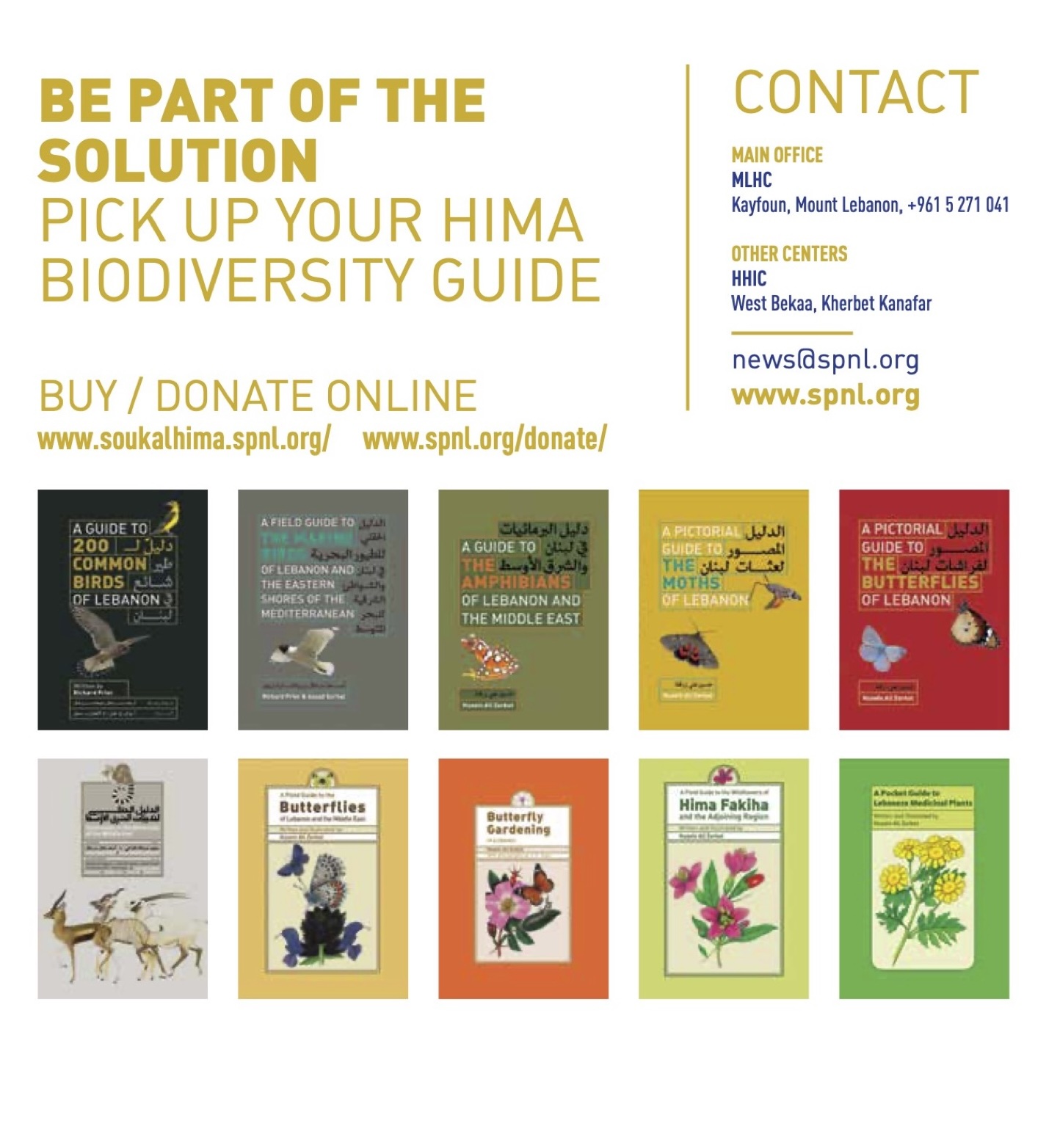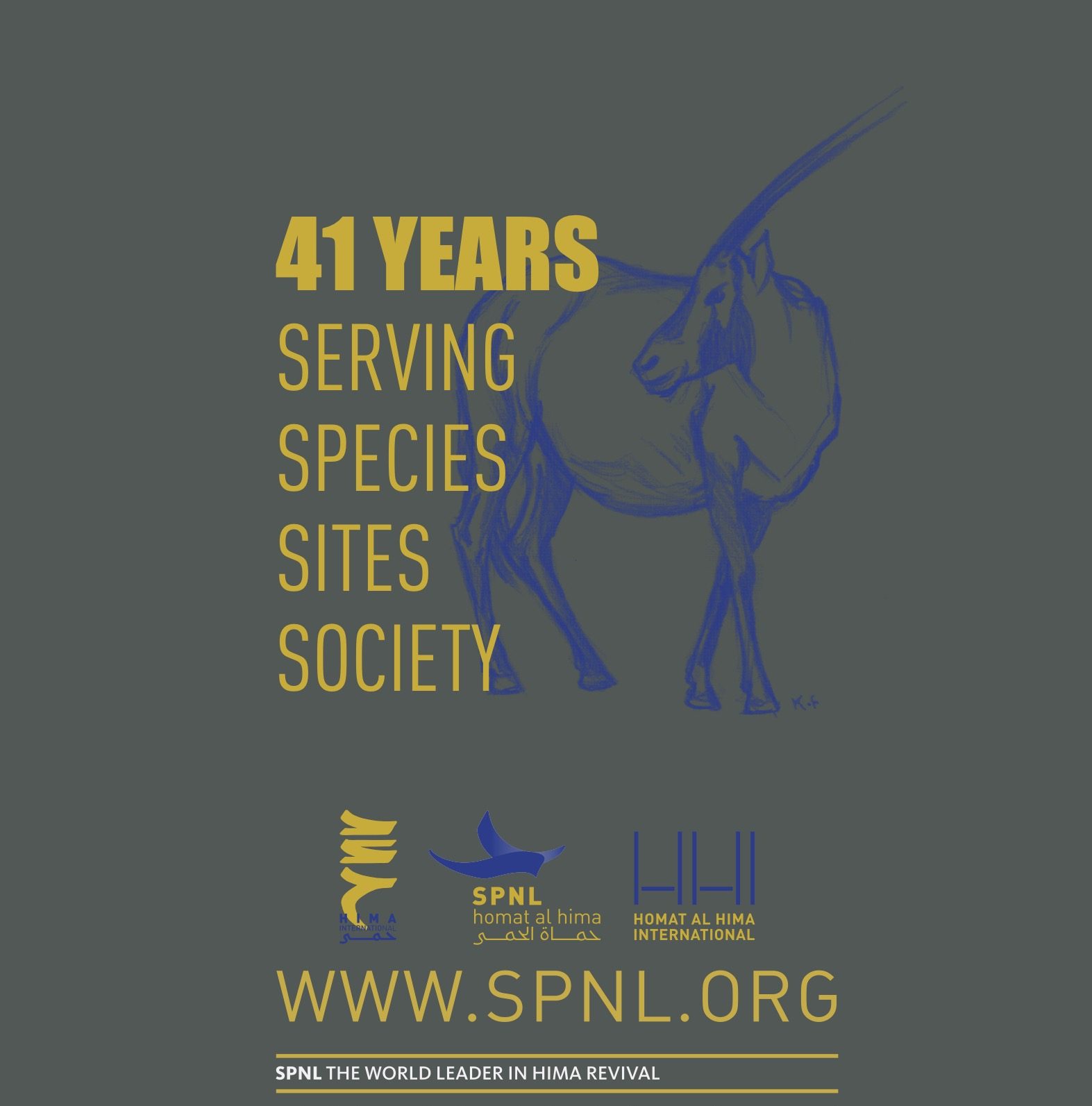The hima system is a traditional system of protected areas that aims to achieve the sustainable use of natural resources by the communities surrounding the hima and for its benefit. This system contributes, indirectly, to preserving biodiversity, in addition to the natural and cultural heritage of the region in question.
The hima system is important because it is a nature conservation system based on the participation of local communities in the system, in addition to the central government’s system of protected areas, something that results in benefits for local community groups. Also, it results in local support for the revival of the hima system as a useful, economically viable and sustainable system, supplementing the system of nature reserves, something that will ultimately lead to the increased involvement of local communities in the direct benefits of the hima, which result from conservation and which improve the state of natural resources specifically.
In many cases, the hima system approach may be cost-effective, and help attract the support of other resources not available for official nature reserves. The hima system can also provide greater opportunities for the sustainable human use of natural resources, and thus contributes more to the alleviation of poverty among people whose natural resources constitute an essential part of their livelihood. The general goal of the hima revival initiative is to connect traditional Islamic methods with modern, scientific methods of nature conservation to achieve sustainable development.
The Noble Qur’an and the environment
The Qur’an contains many references to the natural environment, and also contains some important principles as to its conservation.
The first principle that reflects the Islamic approach to the subject of environmental sustainability is the concept of stewardship, whereby it is required of the person holding the position of trustee to take all necessary steps to ensure that ownership is transferred to the next generation in the purest manner possible.
In Islam, every person is a guardian of nature (i.e. the protector of hima in our ancient and modern concepts, respectively). In Islam, every person must live in harmony with the other creatures in it. It is the duty of all Muslims to respect the environment and conserve it.
Corruption of all kinds, including environmental corruption – which includes industrial pollution, environmental damage, the reckless exploitation and mismanagement of natural resources – is detestable in the eyes of God Almighty.
Says God Almighty in His book:
“And they seek corruption in the land on earth, and do not like spoilers 64﴿” – Al-Maedah
“And do not spoil in the land after it is repaired. That is better for you if you are believers 85 ﴾” – Al-Maedah
“I feel as well as I do to you and do not want corruption in the earth, but the spoilers do not like ن 77 ﴾” – Stories
“My children, take your adornment from every mosque, eat, drink, and do not be extravagant, because the profligate does not like it.” –﴿ 31
According to the Qur’an, conserving the environment is a religious duty and a social obligation, and is not open to personal choice. The exploitation of a specific natural resource makes one directly responsible for it and for the commitment of its conservation and for ensuring its sustainability.
The Prophetic hadith, the environment and the concept of hima
The Prophetic Hadith also deals extensively with various environmental topics, including the conservation of resources, the development and reclamation of land, and the cleanliness of the environment. The Prophet Mohammad was a critic of extravagance and profligacy, and preached moderation in all aspects of life. The most famous prophetic hadith regarding the environment is
“The earth is pretty and green, and God has entrusted it to you- narrated by a Muslim”, and it reaffirms the teachings of the Qur’an, in which it was stated that humankind has been given the responsibility of custodianship of the natural environment.
Prophet Mohammad clearly forbade the destruction of trees and agricultural crops even during wartime, as long as its presence is still useful to the enemy.
He also placed great importance on the sustainable cultivation of land and the humane treatment of
animals, the conservation of natural resources, and the protect of wildlife.
And from some of the sayings of the Prophet:
Ladder – In Urging Environmental Sustainability:
((No Muslim implanted or planted crops, so he would feed birds, human beings or animals, but that it was considered charity on his part) – Narrated by Al-Nasa’i
((From planting a tree and having patience to preserve it and do it until it yields fruit, it has charity for everything from its fruit For God.)) – Narrated by Muslim.
The Prophet realized that natural resources ought not to be overused or misused.
In order to protect land, forests, and wildlife, he created areas that could not be violated, known as “sacred” or “hima”, in which the resources are left untouched, a no man’s land being created around wells and water sources for the protection of Groundwater from over-pumping of water. As for the hima, it was applied to wildlife and forests. Lands where grazing and logging were restricted, or some animal species (such as camels) were protected.
Prophet Mohammad created a hima in the south of Medina and banned hunting within a radius of four miles, and banned the destruction of trees or plants within a radius of twelve miles. The forbidden areas that he set aside highlight the importance of the sustainable use of natural resources and the protection of
wildlife and farmland. The Prophet forbade the cutting of trees within this hima but did not forbid hunting within it, which is why Imam Malik named it Dar al Hijra, to distinguish it from the city sanctuary in which hunting is prohibited, in addition to the sanctity of a tree. The sanctuary is considered a tree hima.
The city is a ring within the larger ring, which is hima, which is today known as the biosphere of a hima, which affects it with less stringent standards of the hima proper.
Several Islamic himas are mentioned in the book “Himas of Medina” by Abdallah ben Mustafa Shanqeety in which he explained meaning and etymology of the word hima, defining it before and after Islam and denoting its divisions, as well as referring to the most famous Arab himas before Islam, such as the Naqyh hima that included Jabal Quds, Jabal Bram, Jabal Makmal, Jabal Al-Watda, Al-Sahra, Al-Naba’a, Miribid, and a few valleys mentioned in this hima, including Wadi Hamat,
Wadi Sour, Wadi Dhaf and Wadi al-Naba ‘, and he also spoke to Hima Ribda in reference to Jabal Rabid.
Maintaining Islamic himas between history and modernity
Historically, tribal leaders in the Arab region applied the hima system, and this responsibility was later transferred to religious leaders in order to provide benefits to the needy within the local communities and amongst the tribes.
Subsequently, this responsibility was transferred to the municipalities in Near Eastern countries such as Lebanon. This transformation contributed to ensuring equality and the just use of natural resources. Most Near Eastern countries have neglected the hima system over the past 50 years, adopting systems from other parts of the world.
There is no doubt that the concept of sustainable development that humankind has finally reached, came after prolonged suffering and the tremendous waste of natural resources, and the pollutants that various industries have created, ruining the soil, water and air.
Islam’s teachings, as Hoffman emphasized in his research on the relationship of Islam to the environment, in which he sees the real reason for what has befallen the environment as resulting from the arrogance of people who do not believe in God’s existence, believing one is master of nature and consuming in a manner that is unlimited and insatiable.
As for the Muslim, he realizes that he has nothing, and that the king is alone, and that the environment is a trust that God has given him in so that he can exercise its rights and exploit it responsibly.
Accordingly man is charged with moderation in everything, and not exhausting his environment’s resources or energies; the issue not being to glory in nature or live with in a romantic way, but rather in man changing himself as the consumer of its resources, making a commitment to moderation and imposing reasonable and wise restrictions on oneself in dealing with it, while changing the economic system that exploits and violates the rules of nature.
The environment is a source of support for faith in the hearts, which manifests the miracle of the Creator in all his affairs, and the relationship being one of love, trust and faith in God Almighty.






